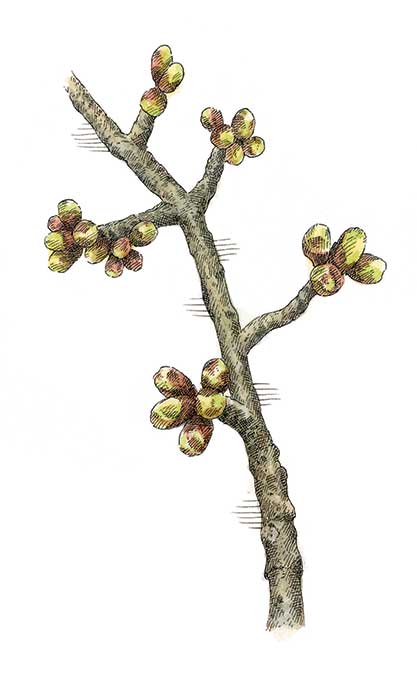Apple grower and writer Michael Phillips is the author of The Holistic Orchard. He lives in Groveton, New Hampshire. Here he shares his expert advice on how to prune an apple tree.
Tree pruning is a skill that’s never completely mastered. Just ask Michael Phillips, a longtime orchardist who’s been grafting and growing apple trees at his Heartsong Farm for the last quarter-century. “I’m still on a learning curve,” he says. “I’ve certainly made some whopper mistakes. But that’s one of the fascinating things about working with plants. Some years things go right; other years, not so much. But the more you do it, the more your confidence builds.”
When to Cut
Trees can be pruned anytime after the leaves have fallen. But it’s best to wait till the threat of subzero winter days has passed. Extremely cold weather, Phillips says, can cause the cuts not to close correctly, which can lead to infection, which in turn can lead to black rot.
Be the Bud
Before you cut a limb, Phillips says, think about what the cut will produce. How much light space will it open up? And in turn, how will the buds and shoots respond? “It’s a little bit of time travel,” he says. “Because you’re in the present, but you’re also thinking ahead to the next year and the year after.”
Water Sprouts
Novice pruners often believe they have to lop off every vertical shoot that pops off the tree. Not so, says Phillips, who likes to leave around 15 percent of the weaker growth. “The tree’s reaction to pruning is to grow more shoots,” he says. “By allowing some of them to grow for a year or two, you calm the tree, so that it will actually grow fewer new sprouts and more fruit.”
Let In the Light
Years ago, an old Vermont hill farmer told Phillips that when you’re done pruning, there should be enough space to throw the family cow between the branches. Phillips’ approach is a bit more fine-tuned: “You want any bud to see more than 30 percent of the day’s sunshine, because that’s the minimal amount of light that will allow it to develop fruit. But in pruning an overgrown tree, we never remove more than a quarter to a third of the canopy in a single year.”
Think Big
Too often, Phillips says, tree owners avoid cutting off bigger limbs because they’ve fallen in love with the shape they’ve given the tree. If the goal is to create light space, sometimes those large branches have to go. Then, only after the structure of the tree is in place, can the smaller cuts begin. “As you get more experience, the decision making comes more quickly,” Phillips says. “Once you make your cut, there’s an immediate feeling of
Yep, that was right. Sometimes there won’t be that feeling. Then you know you have a couple of years to recover.”
For more on Michael Phillips and Lost Nation Orchard, visit: herbsandapples.com 


